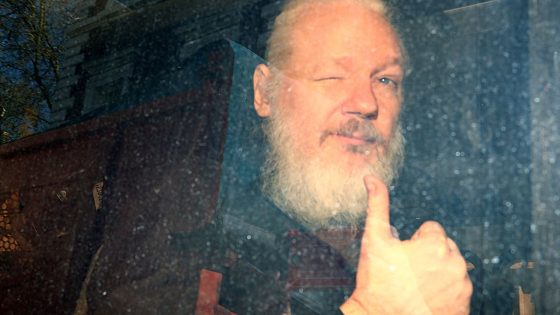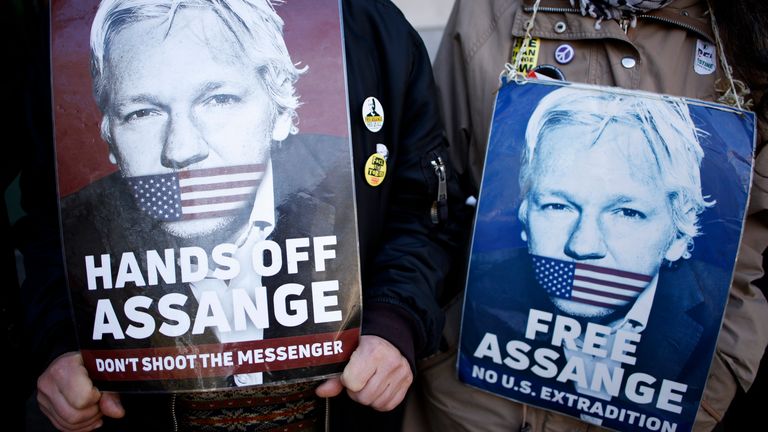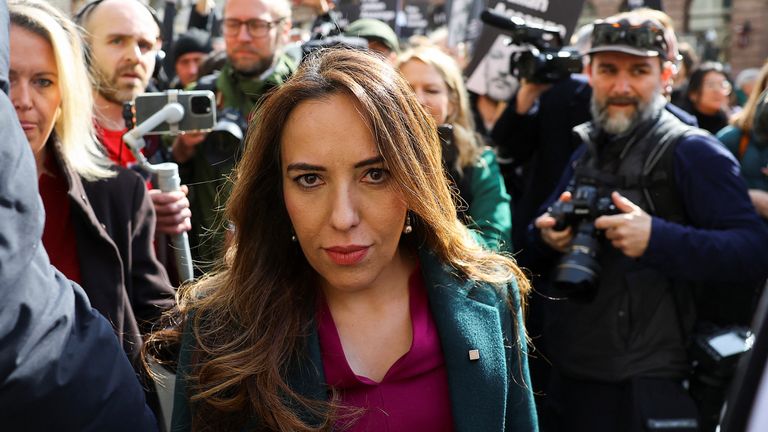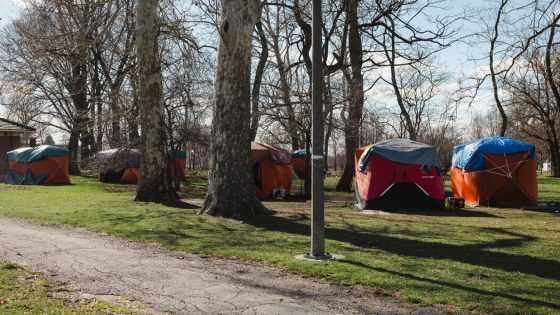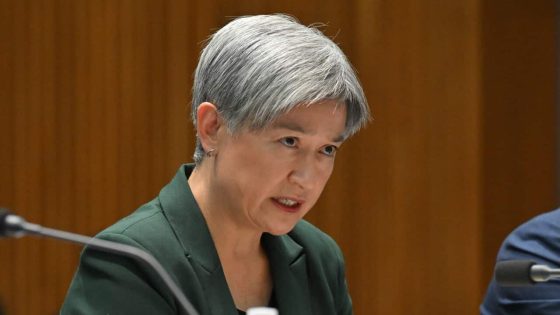WikiLeaks founder Julian Assange has left prison in the UK after reaching a plea deal with the US over espionage charges.
The 52-year-old Australian national has agreed to plead guilty to a single criminal count of conspiring to obtain and disclose classified US national defence documents.
In a post on X, WikiLeaks said Assange left Belmarsh prison on Monday morning, having been there for 1,901 days.
By the afternoon he was at Stansted Airport where he boarded a plane and left the UK.
His plea and sentencing is scheduled for Wednesday morning, local time in Saipan, the largest island in the Northern Mariana Islands. Once accepted by a judge, he will be free to return to Australia.
The road leading to this point has been full of legal battles, campaigns and diplomatic tensions for Assange and his family.
Here is a timeline of some of the key events that has led to Assange’s release:
2006
Assange founds WikiLeaks, a website aimed at leakers of classified or sensitive information.
5 April 2010
WikiLeaks releases leaked video from a US helicopter allegedly showing an air strike that killed civilians in Baghdad, including two Reuters news staff.
25 July 2010
WikiLeaks releases more than 91,000 documents, mostly secret US military reports about the Afghanistan war.
August 2010
An arrest warrant is issued over separate allegations of rape and molestation after Assange’s visit to Sweden. He is questioned in Stockholm and denies the claims.
October 2010
WikiLeaks releases 400,000 classified military files chronicling the Iraq war. The next month, it releases thousands of US diplomatic cables, including views of foreign leaders and blunt assessments of security threats.
18 November 2010
Interpol put out an international arrest warrant after a Swedish court approves request to detain him on suspicion of rape, sexual molestation and unlawful coercion.
December
Assange is remanded in custody after an extradition hearing in London. He later gets bail but is kept behind bars when Swedish authorities challenge the decision.
Conditional bail is reinstated at the High Court when supporters offer up £240,000.
February 2011
The extradition request from Sweden is granted, as a UK judge says it would not breach Assange’s human rights. The WikiLeaks founder vows to fight the ruling.
In November of the same year, he loses a High Court appeal against his extradition.
14 June 2012
The UK’s Supreme Court rejects Assange’s final appeal.
19 June 2012
Assange steps inside the Ecuadorian embassy in Knightsbridge, central London.
He requests political asylum, fearing he could be eventually end up being extradited to the US to potentially face decades behind bars.
16 August 2012
Ecuador grants the asylum request, meaning Assange can be assured police are not able to enter and arrest him – as long as he doesn’t leave the building – because of special diplomatic immunity rules.
Metropolitan Police guard the building in case he tries to flee to the safe haven of the South American country.
December 2014
American linguist and philosopher Noam Chomsky and Hollywood actor John Cusack visit Assange at the embassy.
By this point, Assange’s team have lost an appeal in Sweden over the decision to uphold the arrest warrant.
Other famous visitors during his time in the embassy include ex-Baywatch star Pamela Anderson – who dropped by on a number of occasions with a spot of lunch, Lady Gaga, Eric Cantona and civil rights campaigner Jesse Jackson.
Nigel Farage is also spotted leaving the embassy at this time but refused to say whether he had met Assange.
13 August 2015
The inquiry into the sexual molestation and unlawful coercion allegations is dropped after a legal time limit passes – but the more serious rape allegation stands and the investigation remains active.
17 January 2017
Barack Obama, the outgoing US president, decides to free WikiLeaks’ key whistleblower Chelsea Manning.
19 May 2017
Sweden’s prosecutor says the rape case against Assange has been dropped.
Speaking on the balcony of the Ecuadorian embassy at the time, Assange said Sweden’s decision to drop the rape claim investigation was an “important victory”.
11 April 2019
Assange is arrested at the Ecuadorian embassy after the Ecuadorian ambassador “invited British police” inside.
1 May 2019
Judge Deborah Taylor jails Assange for 50 weeks for breaching his bail by seeking asylum in the embassy at Southwark Crown Court. At the hearing, a letter is passed to the judge in which Assange apologises “unreservedly” to anyone who feels he “disrespected them” by the way he “pursued” his case.
13 May 2019
Swedish prosecutors announce they are reopening the 2010 rape investigation against Assange.
11 June 2019
The US Justice Department formally asks Britain to extradite Assange to the US to face charges that he conspired to hack government computers and violated an espionage law.
19 November 2019
Prosecutors in Sweden drop their case completely, citing a lack of evidence and that too much time has passed since the alleged offences.
13 January 2020
Assange appears at Westminster Magistrates’ Court, where he is backed by dozens of supporters – including rapper MIA.
12 April 2020
It is revealed Assange secretly fathered two children while he was living in the Ecuadorian embassy. His partner Stella Moris, issues a plea for his release, amid fears for his health.
24 June 2020
The US Department of Justice issues an updated 18-count indictment over Assange’s alleged role in “one of the largest compromises of classified information in the history of the United States”.
4 January 2021
A British judge rules that Assange should not be extradited to the US to face criminal charges, due to fears he may take his own life in prison. The US government says it will appeal the decision, adding that he could serve his jail time in Australia.
10 December 2021
The US government wins its High Court bid to overturn the judge’s decision not to extradite Assange.
23 March 2022
Assange marries his fiancee Stella at Belmarsh prison. She wears a dress designed by Dame Vivienne Westwood.
17 June 2022
The UK government approves the extradition of Assange to the US, where he faces espionage charges.
The then-home secretary Priti Patel signs the extradition order for the WikiLeaks founder. He is given 14 days to appeal the decision.
June 2023
Judge at London’s High Court rules Assange has no legal grounds to appeal.
20 February 2024
Assange launches what his supporters say will be his final attempt to prevent extradition.
26 March 2024
The extradition is put on hold when the court says the US must provide assurances that Assange will not face a potential death penalty.
10 April 2024
President Joe Biden says the US is “considering” dropping its prosecution of Assange following a request from Australia. The country’s prime minister Anthony Albanese backed a motion calling for Assange’s return to his birth country.
20 May 2024
The High Court gives Assange permission to launch a full appeal against his extradition on grounds that, as a foreign national on trial, he might not be able to rely on the First Amendment right to free speech.
24 June 2024
The US Justice Department and Assange reveal a deal in which he will plead guilty to one criminal count and be sentenced to time served.
Source Agencies

